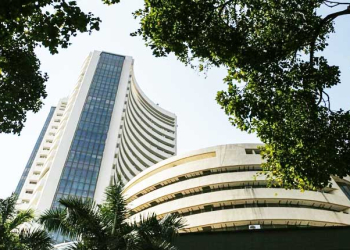New Delhi: With higher returns promised over cost of production for non-rice crops, the differential remuneration is aimed at encouraging crop diversification, the Economic Survey 2021-22, tabled in Parliament on Monday, said.
“In view of nutritional requirements, changing dietary patterns and to achieve self-sufficiency in pulses and oilseeds production, the government has fixed relatively higher MSP for these crops. The highest increase in MSP has been recommended for lentil (masur) and rapeseed and mustard at Rs 400 per quintal each followed by gram at Rs 130 per quintal and safflower at Rs 114 per quintal,” it said.
The expected returns to farmers over their cost of production are estimated to be highest in case of wheat, and rapeseed and mustard at 100 per cent each. For masur (lentil) and gram, return to farmers over cost of production is estimated at 79 per cent and 74 per cent, respectively, and for barley and safflower, it is 60 per cent and 50 per cent respectively,” it said.
This price policy employed by the government vis-a-vis Minimum Support Price (MSP) is aimed at crop diversification.
The government’s price policy for major agricultural commodities seeks to ensure remunerative prices to the growers for their produce with a view to encourage higher investment and production and thereby, to safeguard the interest of consumers by making available supplies at reasonable prices.
The government fixes MSP of 22 mandated agricultural crops on the basis of the recommendations of the Commission for Agricultural Costs and Prices (CACP) and after due consideration of the views of state governments and the Central Ministries/Departments concerned.
The 22 mandated crops include 14 Kharif crops – paddy, jowar, bajra, maize, ragi, tur (arhar), moong, urad, groundnut, soybean (yellow), sunflower seed, sesamum, nigerseed, cotton and six Rabi crops – wheat, barley, gram, masur (lentil), rapeseed and mustard, safflower and two commercial crops – jute and copra.
“In addition to that, MSP for toria and de-husked coconut are also fixed on the basis of MSPs of rapeseed and mustard, and copra respectively,” the Survey said.
While recommending MSPs, CACP considers important factors like cost of production, overall demand-supply conditions, domestic and international prices, inter-crop price parity, terms of trade between agricultural and non-agricultural sectors, the likely effect on the rest of the economy, besides ensuring rational utilisation of land, water and other production resources and a minimum of 50 per cent as the margin over cost of production.
The Union Budget for 2018-19 had announced the pre-determined principle to keep MSP at the level of one and half times the cost of production. Accordingly, the government had increased the MSP for all mandated Kharif, Rabi and other commercial crops with a return of at least 50 per cent over all India weighted average cost of production from the agricultural year 2018-19 onwards.
In line with the same principle, the government has announced the increase in MSP for all mandated kharif crops of 2021-22. The highest absolute increase in MSP over the previous year has been recommended for sesamum (Rs 452 per quintal), followed by tur and urad (Rs 300 per quintal each).
In case of groundnut and nigerseed, there has been an increase of Rs 275 per quintal and Rs 235 per quintal, respectively, in comparison to last year.
“The expected returns to farmers over cost of production are estimated to be highest in case of bajra (85 per cent). For urad and tur, return to farmers over cost of production is estimated at 65 per cent and 62 per cent, respectively. For the rest of the crops, return to farmers is estimated to be at least 50 per cent,” the Economic Survey said.
(IANS)


















